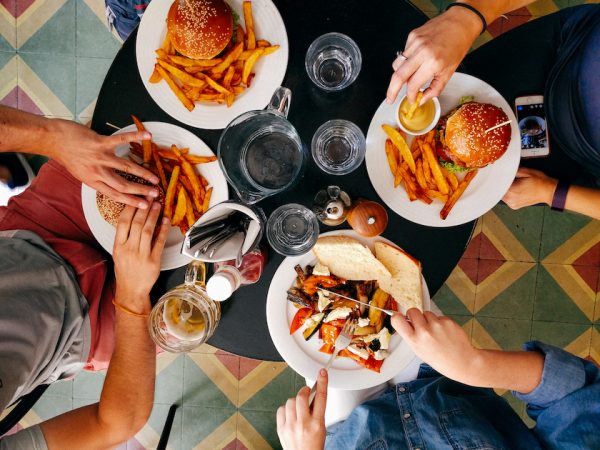How a country approaches dinner often reflects their approach to the rest of life, and America is no different. When attempting to understand a new culture the first step is often to learn about their food and the traditions and rituals that surround a meal.
As one of the world’s largest and most culturally diverse countries, popular cuisine in America is eclectic and evolving. While it is difficult to define exactly what constitutes “American Cuisine” the American approach to a meal can reveal some interesting and important aspects of American culture as a whole.
Individualistic:
American culture is founded on an individualistic identity which is different than what many other cultures value. Rather than being centered around community or family, the average American has a high priority of being an independent individual. In fact, in American English, there are over 100 words beginning with the prefix “self”. This priority is reflected in the food culture here in America.
Many restaurants are formatted around the idea of creating options for individualization. Places like Subway and Chipotle offer each customer the chance to personalize their meal by choosing what ingredients they do or do not want. The popular fast-food chain Burger King caught onto this idea of individualization in food early and created an iconic slogan, “Have it your way,” emphasizing that at their restaurant, each person can have things exactly the way they want it.
Efficiency:
In the English language, we use phrases like “killing time” or “saving time” to express the value of how time is passed. Many Americans feel that people should respect one another’s time and that time should be occupied in an efficient way. In American culture, time is a driving force that shapes how businesses, schools, and families operate.
Worldwide America is known for fast food. No matter where you are in the world you’re likely to find a McDonalds or a KFC or some version of these restaurants. While the idea of fast food has crossed the oceans and appealed to the masses, it points to the deep driving force in American food culture — a need to be efficient.
Many Americans do not see meals as a time to enjoy or savor food, but rather as a task to complete. For many cultures, meal time is a time to retreat from work or school and spend time with others. However, in American culture, we see a high value placed on the ability to get food quickly.
The popularity of the “Drive-thru” and delivery services, also reflect the prioritization of efficiency. They allow you to get an entire meal without having to leave your car or home.
From your couch, you can order pizza and have it delivered to your door. From your car, you can drive through and have a meal, coffee, or doughnut handed to you through your window.
Companies, such as Blue Apron or HelloFresh, deliver fresh ingredients and a step-by-step recipe to help people create a well-balanced meal at home without going shopping or planning ahead.
These tangible examples of how a desire for individualization and the pursuit of efficiency affect Americans approach to food can help us see these principles manifested in other aspects of life in America. Understanding these values and principles that affect most Americans can help us communicate and build relationships with one another.
Questions:
How does this help you navigate the food culture here? Is it similar to what you grew up with? Does it help you make sense of your American friends? How can you share your food traditions with your friends here?
Share your answers in the comments or discuss it with friends.



